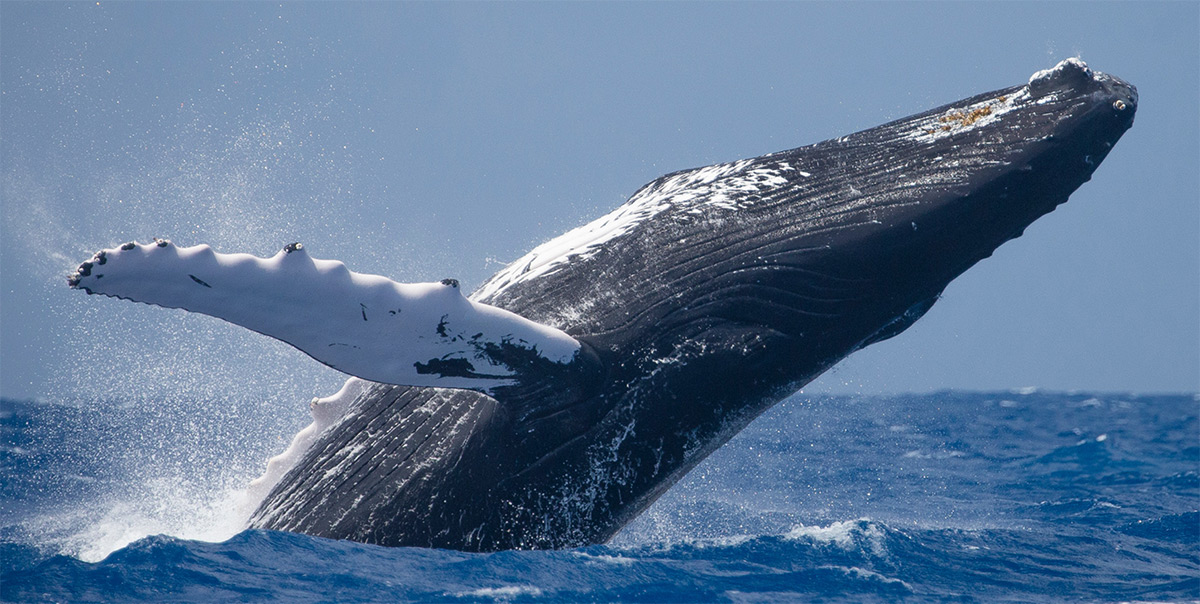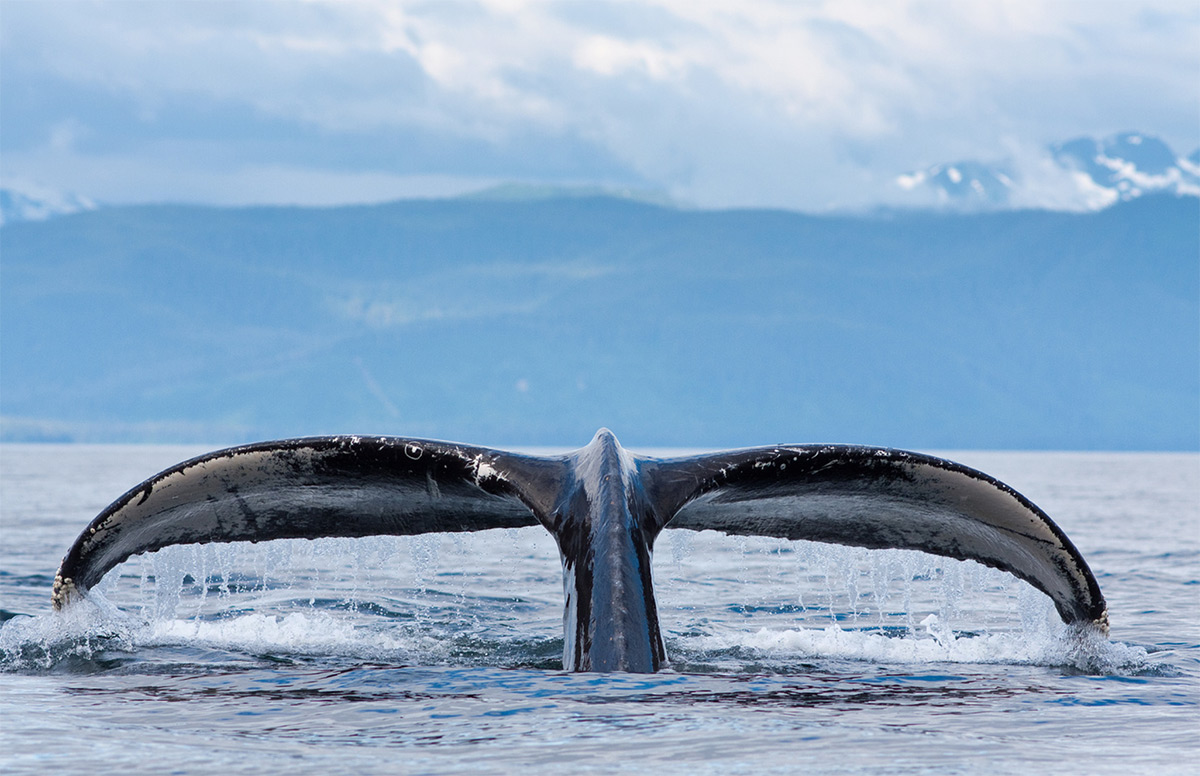
Humpback whale: Megaptera novaeangliae photo credit: Steve Lefkovits, Pacific-Landscapes.
Humpbacks live in all the major oceans from the equator to sub-polar latitudes.
They are baleen whales: their baleen acts as a sieve straining out water as it traps small fish or plankton. Humpbacks have pleated throat grooves that open and expand, allowing a whale to gulp down huge amounts of food and water. Often the whales feed in groups, herding schools of fish and creating bubble nets that trap the fish, and then opening their huge mouths to engulf their prey.

photo credit: Steve Lefkovits, Pacific-Landscapes.
Although these whales are among the largest animals on the planet, they are acrobatic and playful to watch. You may see them jumping clear out of the water (breaching); or slapping their tails on the surface over and over again.

photo credit: Steve Lefkovits, Pacific-Landscapes.
The songs of male humpback males have haunted us since scientists first recorded them. They sing complex songs on their wintering grounds in Hawaii. The songs can last up to 20 minutes and can be heard over long distances – over 20 miles!
To learn more about humpback whales:
National Geographic: Humpback Whales
American Cetaceon Society: Humpback Whales
Listen to humpback whale songs and read about the first recordings
















